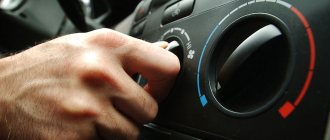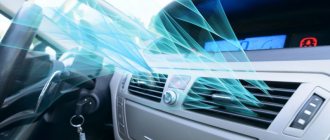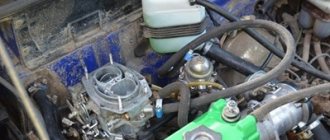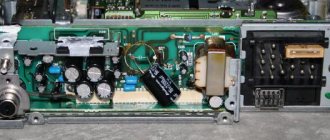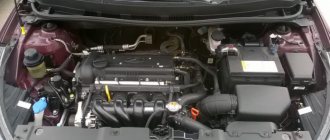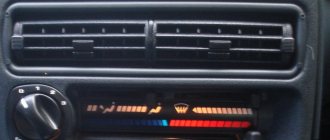A radio in a car is an integral accessory for the car interior, without which the trip may seem boring and monotonous to you. For many drivers, the radio in the car is a good “tonic” tool for keeping oneself in an alert state - the radio keeps them awake and entertains them during long trips.
But sometimes the radio begins to act up, receives the signal unevenly or poorly, hisses, strays from the set frequency, turns off and on spontaneously, works, sometimes louder, sometimes quieter - in general, it begins to irritate. Why does this happen, and how to return normal sound to the car interior?
The radio in the car does not work at all
Before you try to boost the signal or get rid of interference, make sure that the car radio is fundamentally capable of picking up and reproducing analogue radio broadcasts. If this is not the case, then no active antennas will help solve the problem. You will only be wasting your money. And time. But some branded antennas are comparable in cost to simple radio tape recorders.
There are several ways to make sure that the radio receiving part of your car radio is working:
- At some frequencies some bad signal is picked up.
- In the city or its environs there is more or less reliable reception on a couple of channels.
- The radio picks up well in another car.
- You rushed to buy a cheap active antenna, and the radio started playing, but not in the way you expected.
- When the transmitter is connected, the radio reliably reproduces the transmitted signal.
The last method is the most correct. A transmitter is a device that reads audio files from a flash drive (flash drive) and broadcasts them on the radio at a certain frequency. You can buy it at any auto store for a couple of dollars. In the early 2000s, it was an extremely popular device. So, if the radio confidently receives and reproduces the signal from the transmitter, the radio in your car is working properly.
After making sure that the receiver built into the car radio is working, start looking for the reason why the radio does not pick up well.
the radio hisses
Moreover, it’s also better for “+” and “-“.
Also, “drag” the radio around the cabin, see where there is more interference, and dig there.
Oh, it could be almost anything. Even a regular wire to a backlight bulb.
It’s better to take a portable device, unscrew the antenna and crawl through the entire car, looking for sources.
Xenon (and blocks and wires and lamps), a coil, explosive wires, a generator and “its wire”, even the nozzles on the injector (this is an “electromagnet”). All electric motors.
Not everything can be heard in the 27 MHz range, but everything needs to get through.
My cabin fan is making noise. By the way, Max, I finally moved the antenna to the drain near the back door. As a matter of fact, I’ll come to you to measure the SWR, if you don’t mind.
I'll raise the topic... I tried to install the ignition coils from a car in which the station works normally. It didn’t help.. I keep digging..
That is, the same station works fine on one machine, but crashes on another?
It’s better to take a portable device, unscrew the antenna and crawl through the entire car, looking for sources. Or not a laptop.
Related articles:
What is a “TV” under the hood of a car? Is this a peculiar frame or what? What is a TV? Archive of the United ForumUnited...
How to properly transport a dog in a car General rules for transporting dogs in a car If you are transporting an animal to…
Olga Alexandrina's car accident Golikov Albert Alexandrovich Articles | Society Print version “Road accident…
Home / Photos / Travel / Notes / Graphics / ASCIIAround Croatia10 days in a rented car in CroatiaTravel date: August 25, 2010 —…
Good day!
1. I purchased a device - a Mystery MDR-800HD video recorder. Why did the device attract me? I liked it and that’s it... period... Otherwise there will be arguments: this one is better, that one is worse... The article is not about choosing a registrar.
Radio signal too bad
Perhaps the most common reason why the radio in the car has poor reception. A weak signal is a problem that car owners everywhere face far beyond the city limits. The thing is that broadcasting towers are too far away, and the analog signal is far from ubiquitous. It doesn't reach your radio for several reasons. This is the spherical shape of the Earth, and various obstacles - tall buildings, landscapes, plantings, etc.
However, a bad signal does not mean a complete absence of one in the reception area. Despite numerous obstacles, radio waves can still travel very far. Including, partially reflected from the ionosphere (I hope I remembered the name of the atmospheric layer correctly) of our Earth. But with increasing distance and the number of obstacles passed, the signal weakens. Accordingly, if the radio does not pick up well for this reason, the radio waves available “around you” just need to be “caught” more carefully and, possibly, amplified.
How to make sure that the radio in the car has poor reception precisely because of a weak signal? Very simple. You need to check how the reception works somewhere closer to the broadcast tower. As a rule, they are located in cities and other large populated areas. If in such areas your radio starts to work normally, but where you live it hisses and does not receive reception, then the reason is a weak signal.
This problem can be solved in several ways. Again, active antennas, which everyone relies on, are far from a panacea here. It is quite possible that in your case, to reliably receive a weak radio signal, a functional passive mast and elimination of interference will be sufficient. This is discussed a little below.
In general, if the signal is clearly bad, then a high-quality active antenna will help to amplify it qualitatively and reproduce it without interference. Just remember that good quality and cheap are two parameters that cannot intersect in any way in the same model. In practice, it has been proven that Chinese “active” boxes at an attractive price do not enhance anything. And sometimes they generate such interference that the desire to listen to the radio in the car disappears completely and for a long time.
Curious car enthusiasts have repeatedly disassembled cheap “active” models and found nothing inside that should enhance the signal. At best, such a device at least somehow worked due to the presence of a long wire and small “horns”. That is, the amplification effect manifested itself exclusively according to the principle of an ordinary passive mast. Roughly speaking, a free piece of wire works just as well. An active antenna specifically amplifies the radio signal thanks to its radio-electronic filling (it does not necessarily have to be complex and expensive, but to those who do not understand this, they are sold, frankly, unfairly expensive).
Possible causes of poor radio reception
All of the possible causes of poor radio reception listed below are mentioned in almost all materials on this topic. This is nothing new. However, from a practical point of view, all this gives absolutely nothing. Well, you read that in order to pick up the radio in the car, you need to buy a branded (definitely not cheap, since it won’t be of any use a priori) active antenna. We bought it, but it still doesn’t work. And all because the reason for poor reception in a specific individual case was not established.
That is why, after a banal listing of possible reasons, it is very important to have information on how to look for these reasons and check them in practice. This is what you should do first. Here are the most common reasons why the car radio does not work:
- External antenna is damaged/missing.
- The antenna cable is damaged/not connected.
- Weak radio signal.
- Strong radio signal (this point will probably surprise some).
- Problematic car radio.
- Radio interference.
Since knowledge of these quite obvious reasons (except for the fourth) is clearly not enough to solve a specific problem, we will consider each point in more detail.
External antennas
This category includes passive antennas of various formats that are installed outside the car. They are called passive because they pick up a radio signal and transmit it to the receiver of the radio as it is. That is, without any amplification. However, despite this, in some cases such an antenna can significantly improve the quality of radio reception. And here's how.
Firstly, a passive antenna has a certain height, and therefore area. Accordingly, if a more powerful radio signal “flies” not through the radio receiver, but somewhere very close, then the chances of catching it, covering as large an area as possible, increase. Secondly, thanks to the same height, the antenna allows you to catch radio waves that were not delayed by physical barriers - trees, buildings, and so on.
That is why, if the passive antenna is damaged or missing, the radio receiver in the radio may not pick up even a fairly reliable signal. If it does exist, and outwardly looks serviceable, then how can it be checked in practice?
To test the functionality of a passive antenna, it is necessary that the radio receiver picks up at least some wave from it. Even with interference and distortion. Now simply disconnect the antenna by disconnecting the cable going to the radio from it. If after this the reception becomes even worse or disappears altogether, the antenna is working. If nothing has changed, your antenna is of no use (but don’t rush to throw it away).
Accordingly, if the radio does not pick up well enough with it, then this solution is not suitable for your case. In your area there is simply a weak signal, which cannot be reproduced in high quality without additional amplification. You can verify this near broadcast radio towers, where the signal is stronger.
Cables
Any antenna must be connected directly to the radio through a connector specially provided for this purpose. And not anyhow, but with a special cable with a corresponding plug. The main difference between an antenna cable and a regular wire or piece of wire is that it is shielded. This is necessary so that extraneous interference does not interfere with the captured radio signal along the path from the antenna to the receiver. But we'll talk about interference later.
The cable is checked in the same way as a passive antenna. If it is inserted into the connector on the radio, and there is at least some reception, after removing it, what was there should also disappear. If no changes occur after you pull out the plug, then the cable is faulty.
Weak radio signals
A weak radio signal is the most common reason why the radio in a car has poor reception. This happens because there is too much distance between your car and the broadcast tower, or there are some obstacles to the signal. As a rule, the closer you are to a city, the stronger the signal. Outside of it, the radio usually does not work without additional amplification of the captured signal.
In this case there is nothing special to check. If you are further than 10-20 km from the nearest city, then there is no point in hoping for reliable reception of radio stations using a passive antenna. As a rule, you can verify this in the same cities. Within their limits, even Chinese radios are capable of picking up several radio stations without any antenna, and even with the cable removed.
Strong radio signals
You shouldn’t be surprised, but this also happens, and the benefit from this is no more than from a weak signal. The fact is that if there are several strong radio signals on the air, they can overlap each other. That is, the radio receiver is not able to separate them, converting two or more frequencies into sound. The result of this merger can be heard in the speakers.
This doesn't happen very often. The effect of an overly strong signal can be experienced by driving very close to a broadcast tower. Also, an overlay of several frequencies is played by the radio if the signal is good, but it is additionally amplified by an inexpensive active antenna.
High-quality antenna amplifiers easily cope with such problems, cutting off everything unnecessary so that it does not get into the receiver. Cheap amplifiers, as a rule, either do not work at all, or they amplify and transmit not only the useful signal, but also the parasitic ones.
Problematic car radios
In practice, we have repeatedly encountered cases where even expensive branded car radios are not capable of receiving radio with a 100% reliable signal. What can we say about budget nameless options and counterfeits of well-known brands. The problem lies in the circuitry of that part of the radio that is responsible for receiving and converting radio signals into sound.
You can clearly see this by opening an inexpensive model and looking at its board. The area that is responsible for the radio can be identified by chips such as SAA and TEA, as well as by variable capacitors (you can Google what they look like). The first sign that they saved money on the radio receiver is the absence of radio components in those places where there is space for them on the printed circuit board. Without them, it can somehow work. But just anyhow.
How to check the radio receiver built into the radio for functionality? The first option is to try to confidently catch something with a regular passive antenna within the city. The second option is to purchase a so-called transmitter - a device that is capable of playing music from a flash drive and transmitting it over the air at shortwave frequencies. By tuning to the frequency of the operating transmitter, you can easily determine what the standard radio is capable of.
Radio interference
Even if you are in an area of known reliable reception of radio stations, and you have a working radio, the radio in the car still hisses, then interference is to blame. These are spurious signals that can enter the receiver from several sources at once.
Among other things, the following may interfere with comfortable listening to radio stations:
- car ignition system
- other standard electronics;
- radar detector;
- Cell Phones;
- security alarm;
- navigator.
All of the above, like radio broadcasting, operates at high frequencies, and therefore can easily interfere with the useful signal. You can check it as follows. First, compare how the radio works with the engine off and with the engine running. If there is a difference, then interference enters the receiver through the power supply of the radio or active antenna. Next, it makes sense to remove (turn off) all of the above devices from the cabin.
Radio signal too strong
Much less often, but due to the strong signal the radio may also have poor reception. Owners of budget car radios living in big cities sometimes face this problem. The fact is that for reliable reception in such conditions, the most important thing is a good signal. However, due to the fact that there can be several radio waves with the same or similar frequency, they overlap each other, and chaos is reproduced in the speakers.
A good quality car radio is capable of “filtering” everything unnecessary in such conditions. That is, as a result, only the strongest available signal is reproduced, without interference, overlaps and distortion. Cheap devices “can’t do this” because of their poor circuit design. Unfortunately, it is almost impossible to solve this problem. Although it is often possible to partially eliminate interference using filters along the power line and transmitting a radio signal through a passive antenna cable.
Possible faults
First, let's try to determine what caused the poor signal reception by the car radio.
The reasons may be varied. Here are perhaps the most common:
- antenna malfunction. The antenna can be damaged from the outside, this especially often happens in winter. The antenna plug may move away from the connection socket on the radio body due to vibration of the car when driving;
- the location of radio signal broadcasting devices at a very long distance or the presence of natural barriers along the way: mountains, large and tall buildings;
- presence in the immediate vicinity of power lines, railroads, cell phone towers and other electronic interference;
- failure of the radio tuner itself in the receiver. This can happen both in budget radios and in standard premium systems.
Problems with external passive antenna
There are several problems. The very first and most obvious is that the radio does not receive well when there is no antenna at all. Please note that its role is not necessarily played by a long mast installed on the roof or trunk of a car. Very often this function in a car is performed by the rear window defroster. Therefore, before you buy and install a huge roof pin, make sure that your car is not equipped to receive a radio signal through the heater grid.
How can I check this? To do this, you need to inspect the places where the glass heater is connected to power. If more than two wires are connected to the grid, then the third one should go to the radio. Often, somewhere in these places you can find an amplifier. If only two wires connect to the glass heater, then your car is not designed to capture a radio signal in this way.
Another problem with external passive masts is the material they are made from. Very often you come across so-called dummies in car dealerships. The mast can be infinitely long and high, but it will not catch anything, since it is made of anything but metal. In conclusion, it should be said that the antennas that are supposedly designed for installation inside a car are complete rubbish. Under no circumstances should you buy these. Even if the description convincingly talks about effectiveness. Only active amplifiers can operate effectively in the cabin. And even then not all of them.
Additionally, it makes sense to purchase or make your own noise suppression filter if the radio reception is poor. In its simplest form, it is a ceramic or film capacitor with a capacity of approximately 100 nanofarads. It could be more capacious. You can probably find such a capacitor in any unnecessary electronics. For example, in an old broken radio and so on. To turn the found capacitor into an interference filter, it needs to be soldered into a gap in the passive antenna cable.
Please note that only ceramic or film capacitors without polarity are suitable for making a primitive noise filter. Accordingly, barrel-shaped electrolytic capacitors cannot be used in this case. Of course, there will be no harm from them. But there will be no sense either.
Skoda Club Belarus (Skoda car lovers club)
Unshielded cables emit noise due to common-mode noise flowing through their copper conductors, that is, high-frequency current flowing in the same direction throughout all cable conductors. This current creates a magnetic field of a certain magnitude and direction.
Ferrite is a ferromagnet that does not conduct electric current (that is, in fact, ferrite is a magnetic insulator). Eddy currents are not created in ferrites, and therefore they are very quickly remagnetized - in time with the frequency of the external electromagnetic field (the effectiveness of their protective properties is based on this).
Cable ferrite attenuates noise currents by trapping the magnetic field and dissipating some of its energy as heat. In electrical engineering terms, a ferrite element placed on a cable creates a high active impedance for common-mode currents.
Previously, costly shielding of cables with copper braid was used to attenuate noise currents.
The use of cable ferrites has reduced the cost of cable shielding and increased the efficiency of interference suppression.
At first, these ferrite filters appeared on monitor cables (naturally: after all, the quality of the “picture” is greatly influenced by all sorts of interference!), then they gradually spread to other peripherals, and now almost all cables are equipped with ferrite filter cylinders: monitors, printers, scanners, photocopiers, video cameras, digital cameras, keyboards and even cable mice.
Ferrite rings without a shell can also be found inside the system unit.
How to Increase the Noise Reduction Effectiveness of Cable Ferrite
1. Increase the length of the cable part covered by the ferrite core.
2. Increase the cross-section of the ferrite core.
3. The inner diameter of the cable ferrite should be as close as possible (ideally equal) to the outer diameter of the cable.
4. If the design features of the cable-ferrite pair allow, you can make several turns (usually one or two) of the cable around the ferrite core.
To summarize the above, the best ferrite core is the longest and thickest that can be placed on a particular cable. In this case, the internal diameter of the cable ferrite should, if possible, coincide with the external diameter of the cable.
How to use cable ferrite
Sometimes on sale you can find detachable cable ferrites in a plastic shell (heat-shrink tube) with two latches. How to use them?
The open ferrite cylinder is placed on the cable, which must be protected from electromagnetic interference and interference, approximately 3 cm from the cable tip. A loop is made around the cylinder shell. After this, the shell snaps into place. For reliability, you can equip the other end of the cable with a ferrite cylinder.
Goodbye interference, hello undistorted signal.
Wikipedia article
, dedicated
Now I understand why Wikipedia
very often criticized...
Passive antenna cable problems
Any car radio with a radio has a connector for connecting an antenna. It is the same for both an active antenna and a passive one. The cable that connects the passive mast or mesh to the radio must meet at least two conditions. Firstly, it must be whole. You can verify this by checking with a multimeter. Secondly, the cable must be shielded. An ordinary wire will not work here, since it will additionally catch all imaginable and inconceivable interference around.
If you don’t find a standard cable in your car, you can easily buy one and carefully install it with your own hands. Although, probably, a much simpler solution seems to be buying a ready-made active antenna. She already has a cable with a plug. And the device itself is located inside the car, which means you don’t have to pull the cable out onto the street or through the cabin into the luggage compartment.
How to make sure that the radio in the car has poor reception due to the passive mast cable? To do this, you need to find a place where the radio receives at least some radio signal. Next you just need to remove the cable from the connector. If the reception has not changed at all, then the cable is either damaged somewhere or is not connected to the antenna at all. Deterioration in reception indicates that everything is fine with the cable.
Amplifier installation
If, however, the car enthusiast is confident that the standard antenna is in good working order and that the connection to the car radio is reliable, then a special radio signal amplifier will come to the rescue. This option is also suitable for those who have poor reception from their standard radio and do not want to part with it. After installation and connection, the amplifier normalizes the unstable reception of some radio stations. But it should be remembered that it will not save you from obstacles to the passage of radio waves, such as mountains or bulky buildings.
Antenna amplifier for car radio
Extraneous devices in the cigarette lighter socket
Quite often, radio interference in a car is generated by external electrical appliances. They interfere especially strongly if the radio is simple and does not have appropriate filters. There is only one way to make sure that non-standard devices are not the cause of a poorly playing radio. You need to disable it for a while (if any):
- DVR;
- radar detector;
- security alarm;
- phone charger;
- freelance voltmeter;
- fridge;
- inverter and so on.
If after this the quality of the radio in the car has improved, then the problem is obvious. Naturally, no one wants to get rid of, for example, a DVR just to listen to radio broadcasts in the car. To get rid of interference created by non-standard devices, it is enough to either power them through normal chargers, or use filters along the power line of the radio.
The car radio does not pick up well: causes and solution to the problem
Mains chargers supply an output voltage of 5-6.5...
Low pass filter for subwoofer amplifier
The LM324 is a universal type operational amplifier, available in DIP and SOIC packages. The microcircuit is widely used in household and portable equipment, contains 4 free channels with...
A very excellent charger for cars (current up to 50 Amperes)
Many times we have talked about all kinds of pulse-based chargers for car batteries, and now is no exception. And we will look at the design of the SMPS, which...
Charging for PCs (laptops and netbooks) in the car
Charging independent PCs (laptops and netbooks) in a car is quite simple. A standard charger for charging a laptop should have an output voltage of 18 Volts at a current not...
How to choose a primer for a car
Painting a vehicle has always been an important task that requires enormous hardening from the performer. We must not forget that the level of quality of a vehicle’s painting largely depends on...
Poor quality car radio circuitry
This has already been said a little above. If the radio is initially poorly made, then, most likely, even super-expensive active amplifiers will not help make you pick up the radio as it should. How to check? One way is to disassemble the car radio. Find microcircuits marked SAA or TEA on the board, and carefully follow the tracks that extend from them. If you find empty spaces along the way intended for some radio components, it means the manufacturer has saved money, and the radio should not play normally.
Craftsmen in such cases sometimes improve what the manufacturer screwed up. However, all this requires knowledge in the field of radio electronics, and is not always worth the lost time. Nevertheless, as an option to improve radio signal reception and get rid of interference, it has a right to exist.
Purchasing and replacing an antenna
If, after checking all contacts and connections, as before, the radio does not pick up the radio signal well, we proceed to more decisive actions. You need to decide to buy a new antenna.
Auto antenna
Antennas are:
- external;
- internal.
External antennas are not picky to use and have good radio signal reception. But they are more often internally susceptible to mechanical damage.
Internal antennas are more popular among car enthusiasts. Most of them are equipped with a built-in amplifier, and placing such an antenna in absolutely any car, be it a Nissan Beetle, Ssang Yong Chiron or FF2, will not be difficult. Typically, such antennas are placed at the top of the windshield.
Indirect radio interference
These include various parasitic waves, which in our time literally permeate the entire ether. If the radio does not have filters capable of filtering out this kind of interference, the radio receives poorly, hisses, crackles, clicks and does everything it wants, just doesn’t play. You can make sure that the signal is poorly received due to indirect radio interference if you get rid of it for a while.
First of all, check the operation of the radio in the car by turning off or removing the mobile phone, navigator and other non-standard devices from the cabin. In addition, quite often they try to set up radios near residential buildings. And they have microwave ovens, televisions, computers, Wi-Fi routers and other electronics that somehow emit waves into the air. Of course, a good radio can filter all this garbage. But is it like that for you? Power lines can also affect the quality of radio reception. Accordingly, if you move away from all the listed benefits of civilization, you can see whether they or not they worsen the performance of the radio in the car.
How to connect and configure the radio correctly
Connecting a radio to your car yourself is easy. All you need to do is remove the car radio plug from the box and follow simple connection steps. After this, you can try tuning the radio on the radio.
By going into the settings, you can see the items AM/FM1/FM2. They allow you to turn on the radio or select the desired band manually.
Changing the search frequency is also carried out using simple buttons that are located nearby and in most cases are triangular brackets with an up and down direction. A similar button arrangement is present in every music center.
Car radios are also equipped with buttons for programming or changing stations. You can store your favorite radio stations in memory and switch them using one of the digital buttons.
To play, just press the Power button and select the desired item in the list of stations. Basically, there are no difficulties in setting up a car radio, and even an inexperienced motorist can figure out this procedure without much difficulty.
Interference on the radio power line
Even if the car does not have any devices such as a DVR or a mobile phone charger, radio interference may be due to the direct power supply to the radio. There are still a lot of things in the car that generate spurious signals into the on-board network. This includes the ignition system, the generator, and standard electronics.
To get rid of such interference, it is best to buy a special filter that is installed in the power supply gap of the car radio. They are inexpensive, and the effect, as they say, is immediate. You can also make a fairly effective food filter with your own hands. From just one radio component. It's called inductance. These radio components can be found in any broken radio, television and other devices. The inductance is soldered into the gap of the positive power wire of the radio on either side (it has no polarity). And the radio component looks like this.
How to determine if the signal is weak
The signal weakness in a car radio is determined in several ways. The simplest and most common of them is to check its level right there, on the spot. Then, even if you adjust the volume to the maximum value, its level will be insufficient, and sometimes so low-power that there will be no way to listen to this wave. Experienced drivers know that this can be an unpleasant consequence of both the deteriorated performance of the receiver itself and unwanted interference coming into the car from outside: from high-rise buildings and towers with the help of which cellular communications operate, and other factors. There are cases when, as a result, the sound disappears completely on some radio channels. If you want to accurately determine the signal level, use special equipment.
Poor quality active antenna
There is nothing to explain in detail here. The market is full of antennas that say they are active. Although in fact they are, at best, a noise suppression filter, or at worst, just a piece of wire with horns. As practice shows, truly high-quality active antennas start at a price tag of $30 and above. Although they do not always help improve radio reception in the car. This happens if the reason is not a weak signal, but something else.
Let's start troubleshooting
You need to start by inspecting the antenna for damage. Even the most insignificant, at first glance, little things, such as bending, traces of oxidation or other mechanical damage can cause poor signal reception.
Car radio cords
Make sure that all contacts are tightly secured, the plug is firmly installed in the radio socket and has no visual damage. To do this, you need to remove the radio from the dashboard and carefully inspect the rear part, check the tightness of the contacts and connections.
Carry out troubleshooting in areas where there is no radio interference. Leave the area of power transmission towers, move away from railroads and tall buildings. Try retuning the car radio in your car by searching for radio stations. Some Chinese players may be affected by modern gadgets. In close proximity, they can affect low-quality standard assemblies and create interference on the radio.
Brief summary
In conclusion, we will compile a summary table with all the common reasons why radio reception is poor, and ways to eliminate them.
| Why is the radio bad? | What to do |
| Radio doesn't work at all | Test the radio for functionality within the city, using a transmitter or in another car. |
| Signal too weak | Install and connect the passive antenna with the correct cable. If the fishing is bad anyway, buy a good active one. |
| Signal too strong | If the radio signals overlap each other or there is interference, install a noise filter in the gap in the antenna cable. With high-quality radios, there are usually no such problems. |
| Dead passive antenna | It may be missing, disconnected, connected incorrectly or with a damaged cable. |
| Damaged cable | Connect the antenna with a shielded cable. Make sure the cable is working properly by testing it. |
| Freelance devices | Devices such as a video recorder, radar detector, or mobile phone charger create interference. You can protect yourself from them either by filters or by eliminating the source of interference. |
| Poor quality radio | It’s not always the case that an inexpensive radio tape recorder has poor radio reception. This can be checked by disassembling and examining the wiring of radio microcircuits. |
| Indirect radio interference | Mobile communications, Wi-Fi, microwave ovens, industrial equipment, high-voltage power lines, etc. significantly clog up the radio airwaves. If the radio reception is poor because of this, then external noise filters or purchasing a high-quality radio can help. |
| Interference on the power line | They are solved by installing an interference suppression filter in the power supply circuit of the radio. Good radios already have such filters inside. |
| Bad active antenna | As a rule, cheap active antennas do not solve the problem if the radio in the car has poor reception. It is better to refuse to buy them altogether. |
As a result, we see that the radio has poor reception in the car for various reasons. Most often this is a weak signal. However, there are often cases when the reason lies in interference. Therefore, before spending money on an expensive radio or active antenna, work through all the possible reasons for poor radio reception. Perhaps the problem can be fixed for free.
DIY antennas
Wire
You can improve radio reception by building a simple antenna with your own hands. Depending on the range for which it is intended, its dimensions will need to be adjusted.
The smallest antennas are obtained for the FM range, since the frequency of radio stations in this range lies in the range of 88-108 MHz, which means that the wavelength L is from 3.4 to 2.8 meters.
The wavelength of any radio station can be found using the formula:
L = 300000/f, where
L – wavelength in m.
f – frequency of the radio signal in Hz.
Wire antenna design
A wire antenna is the simplest design for the FM range; it can be used in houses made of any material except reinforced concrete. It can also be placed outdoors, stretched between two masts or buildings. The height of the suspension plays a big role: with increasing height, efficiency increases. The orientation of the antenna also plays a role - its directionality in the horizontal plane has the shape of a figure eight.
Since most FM radio stations use vertical polarization, this antenna can be hung vertically; this can be especially useful at the border of reliable reception, where the signal is very weak. This antenna can be used on any MF, HF or VHF band, you just need to recalculate the dimensions.
Pin
The simplest type of whip antenna is a vertical conductor mounted on an insulator and connected at one end to the receiver. The length of the pin must be selected in accordance with the range of received waves. The fact is that, according to numerous experiments and calculations, the length of such an antenna should be equal to a quarter of the wavelength, while the efficiency antenna maximum in any other case decreases.
The pin receives both horizontal and vertical polarization signals well; in addition, this type is easily implemented both in a stationary version and in a mobile one, for example, as a car antenna.
Whip umbrella antenna design
To improve reception, this design adds 4 vibrators that improve signal reception and expand the reception band. This antenna is non-directional, that is, it receives signals equally well from any direction. The lifting height, as in the previous case, significantly affects the reception range. It is advisable to use this design in a country house or in rural areas, where there is less industrial interference.
Constructions for the city
In city conditions, the best option for reception would be to use a wave channel type television antenna. Its advantage is that it is highly targeted. This property is very important in city conditions, as it allows you to choose the direction with the least amount of interference.
A homemade wave channel antenna consists of an arrow with elements attached to it: 2 passive directors, a loop vibrator and a reflector. Dimensions depend on reception range. This design provides high-quality reception at distances of up to 50 km or more, which is a very decent result for the FM range.
Wave channel antenna for FM band
This antenna has an output impedance of 75 Ohms, so it is quite possible to connect the cable directly to the matching box. You can also use meter-wave television antennas with 3-5 channels, which are now often left idle, since television broadcasting has “moved” from these channels to the decimeter range, to satellite or to the Internet.
What to choose
Today, the manufacturer offers not just one, but a whole host of amplifier options for a car antenna.
Domestic manufacturer
Amplifier Triad
It is interesting that our domestic manufacturer also offers a whole line of products called Triad. All models deserve praise, and especially the amplifier for the car radio antenna Triada-304 Dalnoboi, which is equipped with the function of turning off the device and operating in the FM/AM/VHF radio bands.
Foreign manufacturer
Amplifier from Prologi
Among foreign manufacturers, Prologi products take pride of place. For example, their model TFB-100 is capable of amplifying digital and analogue signals and simultaneously working with two antennas.
